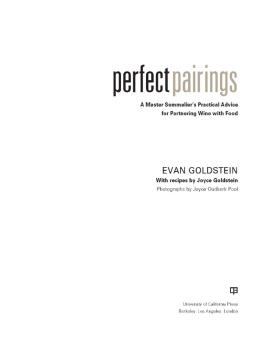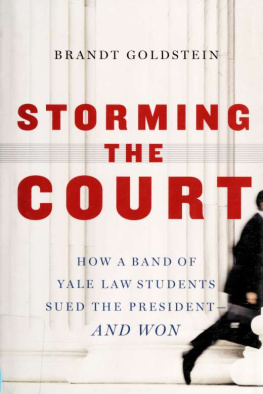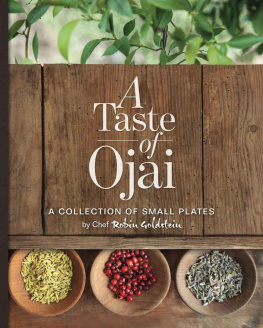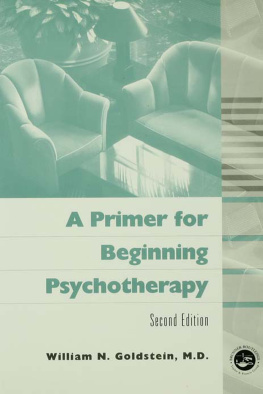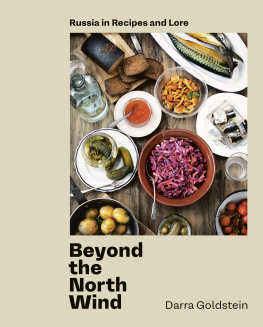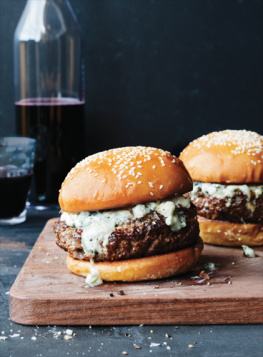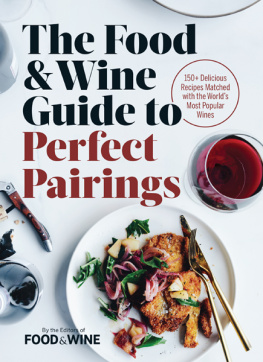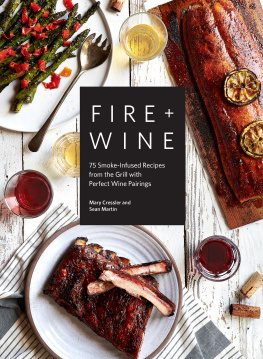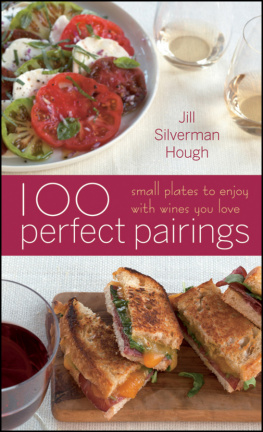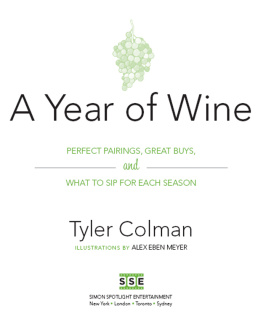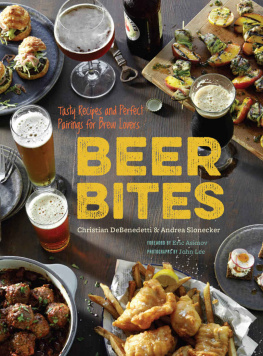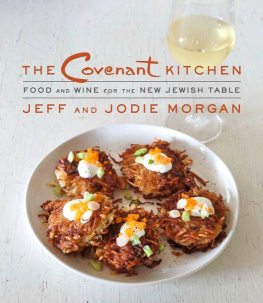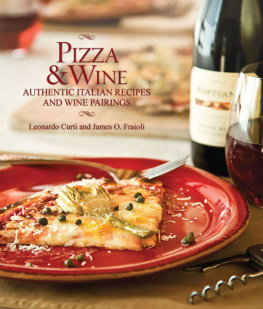Goldstein - Perfect Pairings
Here you can read online Goldstein - Perfect Pairings full text of the book (entire story) in english for free. Download pdf and epub, get meaning, cover and reviews about this ebook. publisher: University of California Press, genre: Home and family. Description of the work, (preface) as well as reviews are available. Best literature library LitArk.com created for fans of good reading and offers a wide selection of genres:
Romance novel
Science fiction
Adventure
Detective
Science
History
Home and family
Prose
Art
Politics
Computer
Non-fiction
Religion
Business
Children
Humor
Choose a favorite category and find really read worthwhile books. Enjoy immersion in the world of imagination, feel the emotions of the characters or learn something new for yourself, make an fascinating discovery.
- Book:Perfect Pairings
- Author:
- Publisher:University of California Press
- Genre:
- Rating:3 / 5
- Favourites:Add to favourites
- Your mark:
- 60
- 1
- 2
- 3
- 4
- 5
Perfect Pairings: summary, description and annotation
We offer to read an annotation, description, summary or preface (depends on what the author of the book "Perfect Pairings" wrote himself). If you haven't found the necessary information about the book — write in the comments, we will try to find it.
Perfect Pairings — read online for free the complete book (whole text) full work
Below is the text of the book, divided by pages. System saving the place of the last page read, allows you to conveniently read the book "Perfect Pairings" online for free, without having to search again every time where you left off. Put a bookmark, and you can go to the page where you finished reading at any time.
Font size:
Interval:
Bookmark:
ACKNOWLEDGMENTS
Most wine and food pairings are a confluence of diverse influences, and so is this book. During its creation, countless people have been inspirational and motivational, while others have been patient and tolerant. And many, truly those to whom I am most thankful, have been all those things.
I thank my wife, Barbara, for her unequivocal love and support, for her discriminating palate, and for reminding me with frequency that it's only fermented grape juice; my daughter, Elena, whose ability to discern today's apple juice from yesterday's at age three still dwarfs any of my gustatory accomplishments; and my son, Adam, whose love of food and request to attend cooking classes at age seven was heartwarming to his dad and a source of family pride.
I thank my mother, Joyce, without whose passion for food, wine, and all things of a sensual nature I'd likely still be trying to make it as a struggling rock-and-roll drummer, and whose recipes grace this book and make it far better than it would be without them; my sisters, Karen and Rachel, whose palates are better than mine; and my father, Marc, who, in spite of recognizing and appreciating gourmet cuisine, would be far happier with a grilled-cheese sandwich, made with real American cheese!
I express my profuse thanks to the team at the University of California Press: my editor, Blake Edgar, whose support and belief in this project made it happen; Nola Burger and Nicole Hay-ward for their design prowess; Dore Brown, Erika Bky, and Chalon Emmons for their perspective and assistance with the text; and Jenny Wapner and Matthew Winfield for keeping the engine humming.
I also thank my agents, Eric and Maureen Lasher, and my indispensable right hand during this project, Christie Dufault, who organized the tastings, kept copious notes on the hundreds of wines we tasted, provided balanced opinions, and kept the devil out of the details!
Appreciative gratitude goes out to all the producers, importers, and winemakers who shared their wines, souls, and personal artistry.
And finally there are my peers and friends, who collectively have influenced me more than they will ever know. Among them are Nunzio Alioto, Stephen Brauer, Sam Bronfman II, Val Brown, Fred Dame, Gilles Deschamps, Barbara Ensrud, Doug Frost, Jol Girodot, Diana Goldstein, Peter Granoff, Daniel Hall, Mike Holden, Chet Hutchinson, Brian Julyan, Masa Kobayashi, Danny Kopelson, Nick Lander, Barbara Lang, Erika Lenkert, Bob Long, Chris Lynch, Karen MacNeil, Danny Meyer, Bill Newlands, Steve Olson, Ronn Owens, Kathleen and Michel Rege, Andrea Immer Robinson, Jancis Robinson, David Rosengarten, Leslie Sbrocco, Ab Simon, Harvey Steiman, Madeline Triffon, Paul Wagner, Alice Waters, Josh Wesson, Wilfred Wong, Mary Ann Worobiec-Bovio, Kevin Zraly, and the late, great Gerard Jaboulet.
SPARKLING WINES
Champagne and other types of sparkling wine, which make up the bubbly category, are different from varietals: in addition to being effervescent, these wines are almost always blends rather than single-grape (varietal) bottlings. And they are fantastic with food! But unfortunately, most of us reserve our enjoyment of these bubblies for celebrations or drink them like cocktails, without food. We should consider these sparklers more frequently, because they have an amazing affinity for many dishes.
Where do the bubbles come from? When grape juice is fermented into wine, the yeast organisms convert sugar into alcohol. In the process, carbon dioxide gas is released. In the making of still wines, this gas is allowed to dissipate into the air. In sparkling wines, it is retained. To make Champagne and Champagne-style wines, still wine is placed into a bottle with a small amount of sugar and live yeast. The carbon dioxide produced from this second fermentation is trapped in the bottle as effervescence. In other styles of sparkling wine, the carbon dioxide is trapped at other stages, using different processes.
WINE-GROWING AREAS
Most people believe that all sparkling wines are Champagne. This belief is true only to the extent that the region of Champagne, in northeastern France, is universally revered as the spiritual home of bubblies. It is the birthplace of the Champagne method (the mthode champenoise, pronounced me-tud cham-pen-woz)the production process by which a secondary fermentation is induced in the same bottle in which the still wine is bottled after blending. The result is a sparkling wine of complexity and great elegance.
You can say that all Champagne is sparkling wine (virtually all of it is), but you cannot say that all sparkling wine is Champagne. In order to be labeled as such, it must come from this prestigious appellation. In other parts of France, sparkling wines are produced using the same method (identified on the label as the mthode traditionnelle). However, these producers often use different grapes, and the wines don't have Champagne's uniquely layered character of toasted brioche, hazelnuts, tart citrus, and chalky earth, rooted in the holy trinity of Champenois grapes from which the wines are produced: Chardonnay, Pinot Noir, and the indigenous Pinot Meunier. Many of the other French sparkling wines, labeled as Crmant (for example, Crmant de la Loire, Crmant d'Alsace), are nevertheless excellent. The Cava appellation in the Catalonia region of Spain produces more mthode traditionnelle wine than any other country in the world; it bears the eponymous name of Cava. More rustic, uniquely savory, and with flavors of mineral, spice, and earth, Cava makes use of the indigenous Spanish grapes of Xarel-lo, Viura, and Parellada and is always a great value. Italy's sparkling wine industry is based in the northwestern region of Piedmont surrounding the town of Asti; its Muscat-based wine is known as Asti Spumante (spumante simply means sparkling in Italian). Asti Spumante is almost always sweeter than other sparkling wines and redolent of the flavors of white Muscat grapes: lychee, apricot, and ripe tangerine. It is also based on a different method of production, by which the wine achieves its effervescence within a pressurized, closed tank: this is the cuve close, Charmat, or bulk process, which preserves all the fresh, primary fruit flavors. A slightly less bubbly relative, Moscato d'Asti, has a similar flavor profile but less prickle on the tongue and makes for enjoyable summer al fresco dining. Italy's other celebrated sparkling wine is Prosecco. Made from the eponymous grape and produced primarily in Veneto but also in the Friuli-Venezia Giulia and Trentino-Alto Adige regions, Prosecco utilizes the same bulk method as Asti Spumante, but produces a wine slightly drier to the tongue, with earthy nuances and more apple and pear notes.
Other countries and regions around the world make sparkling wines using the mthode traditionnelle with excellent results: the United States (with California leading the charge), Australia, New Zealand, South Africa, South America, the rest of Italy (primarily Lombardy's Franciacorta region), and less obvious places like Portugal (which also utilizes the continuous method, described below) and even India. Although the flavor profiles (and in some cases, the grapes) vary from country to country, all these wines share a level of complexity that results from the traditional production method, which adds a creaminess and sophistication to the wine.
There are two other important methods for getting bubbles into the bottle. A process called the transfer, or Kriter, method, named for the German winemaker who invented it, is similar to the mthode traditionnelle, except that the wine is moved from the secondary fermentation bottle into a larger tank to filter out the yeast sediment before being returned to the bottle. Commonly used for speed and efficiency in the past, it is less frequently used today. More common in modern sparkling wine production is the
Next pageFont size:
Interval:
Bookmark:
Similar books «Perfect Pairings»
Look at similar books to Perfect Pairings. We have selected literature similar in name and meaning in the hope of providing readers with more options to find new, interesting, not yet read works.
Discussion, reviews of the book Perfect Pairings and just readers' own opinions. Leave your comments, write what you think about the work, its meaning or the main characters. Specify what exactly you liked and what you didn't like, and why you think so.

